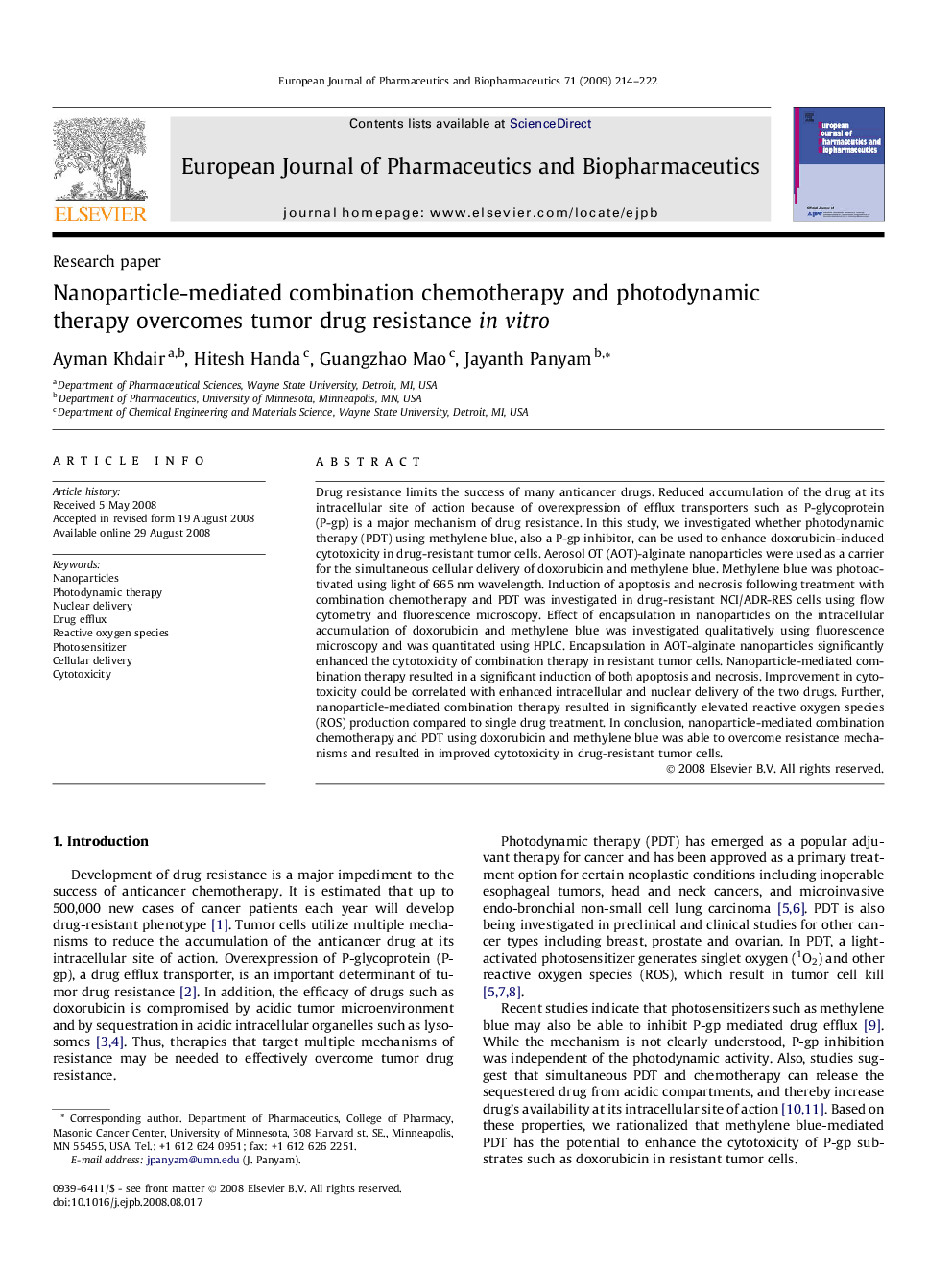| Article ID | Journal | Published Year | Pages | File Type |
|---|---|---|---|---|
| 2085622 | European Journal of Pharmaceutics and Biopharmaceutics | 2009 | 9 Pages |
Drug resistance limits the success of many anticancer drugs. Reduced accumulation of the drug at its intracellular site of action because of overexpression of efflux transporters such as P-glycoprotein (P-gp) is a major mechanism of drug resistance. In this study, we investigated whether photodynamic therapy (PDT) using methylene blue, also a P-gp inhibitor, can be used to enhance doxorubicin-induced cytotoxicity in drug-resistant tumor cells. Aerosol OT (AOT)-alginate nanoparticles were used as a carrier for the simultaneous cellular delivery of doxorubicin and methylene blue. Methylene blue was photoactivated using light of 665 nm wavelength. Induction of apoptosis and necrosis following treatment with combination chemotherapy and PDT was investigated in drug-resistant NCI/ADR-RES cells using flow cytometry and fluorescence microscopy. Effect of encapsulation in nanoparticles on the intracellular accumulation of doxorubicin and methylene blue was investigated qualitatively using fluorescence microscopy and was quantitated using HPLC. Encapsulation in AOT-alginate nanoparticles significantly enhanced the cytotoxicity of combination therapy in resistant tumor cells. Nanoparticle-mediated combination therapy resulted in a significant induction of both apoptosis and necrosis. Improvement in cytotoxicity could be correlated with enhanced intracellular and nuclear delivery of the two drugs. Further, nanoparticle-mediated combination therapy resulted in significantly elevated reactive oxygen species (ROS) production compared to single drug treatment. In conclusion, nanoparticle-mediated combination chemotherapy and PDT using doxorubicin and methylene blue was able to overcome resistance mechanisms and resulted in improved cytotoxicity in drug-resistant tumor cells.
